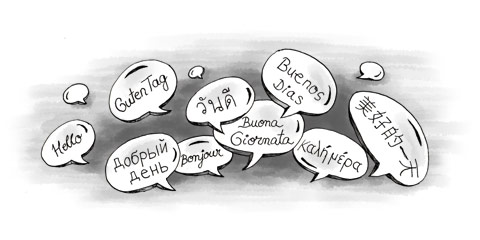Spanish is spoken by approximately 84% of the Peruvian population, making it by far the most widely spoken language in Peru. It is also the main language of the Peruvian government, the media, and the education system.
Those traveling in Peru who are able to speak Spanish will notice slight regional variations, in pronunciation and in some expressions for example. These variations correspond with the country’s three geographical regions of coast, jungle and mountains. For example, someone from the coastal capital city of Lima can often distinguish a Peruvian from the mountains by their accent or way of speaking.
Quechua is the second most common language in Peru and the most widely spoken native language. 13% of the population of Peru speak it, mostly in the central and southern highlands of the country. Quechua was the language of the Inca Empire, but it existed for many years before the Incas came to power. Through use and promotion of the language, the Incas were able to spread its use across the country. This continues to happen today in the Andean regions of Peru.
Many language varieties exist within the Quechua community, to the extent that some Quechua-speakers may struggle to understand those from different areas. For instance, a member of a Quechuan community in the north of Peru may find it hard to communicate with someone from Puno or Cusco.
Only about 1.7% of Peruvians speak Aymara, but it remains the 3rd most widely spoken language in Peru. Due to competition with Quechua, and then Spanish, the number of speakers has declined over the centuries.
In modern-day Peru, speakers of Aymara are located almost entirely in the deep south, along the border with Bolivia and around Lake Titicaca (where the inhabitants, known as the Uros, of the floating islands speak Aymara). The language is spoken more commonly in Bolivia, where there are two million Aymara speakers.
Below is a table showing just how different these languages are from Spanish:
| Spanish (English) | Quechua | Aymara |
| El abuelo (grandfather) | Machula / apucha / hatun tayta / awilu | Achachila |
| Verano (summer) | Ruphay mit’a | Junt’upacha |
| Rojo (red) | Puka | Huila |
| Cinco (five) | Pishqa | Phisqa |
To the east of the Andes, Peru’s linguistic complexity reaches its peak. The Amazon regions host at least 13 ethnolinguistic groups, each comprised of further subdivisions of native languages.
Overall, the remaining indigenous languages of Peru - such as Aguaruna, Asháninka and Shipibo - are spoken by less than 1% of Peru’s population. The majority of Peruvians that do speak an indigenous language (like Quechua and Aymara) are bilingual with Spanish.
Finally, you may hear English spoken in Peru, but only amongst the densely populated touristic areas like Cusco and Machu Picchu, or in high class hotels.

